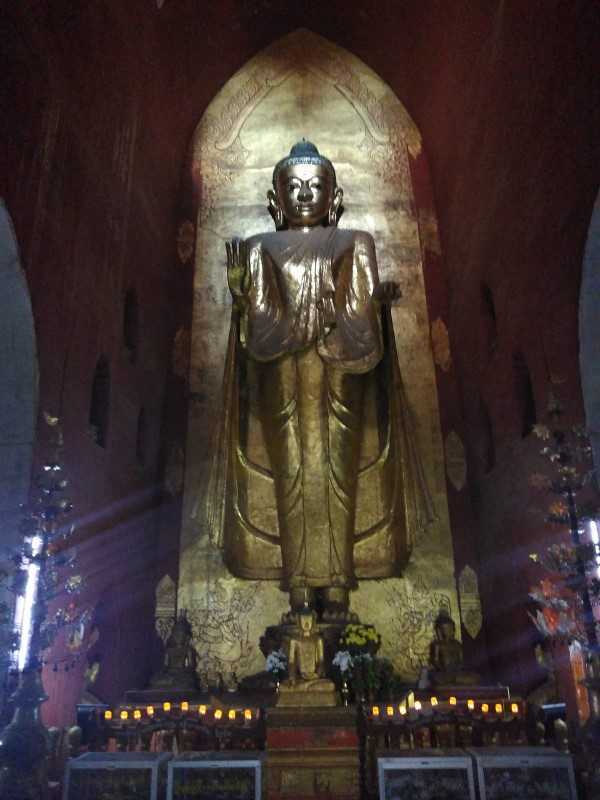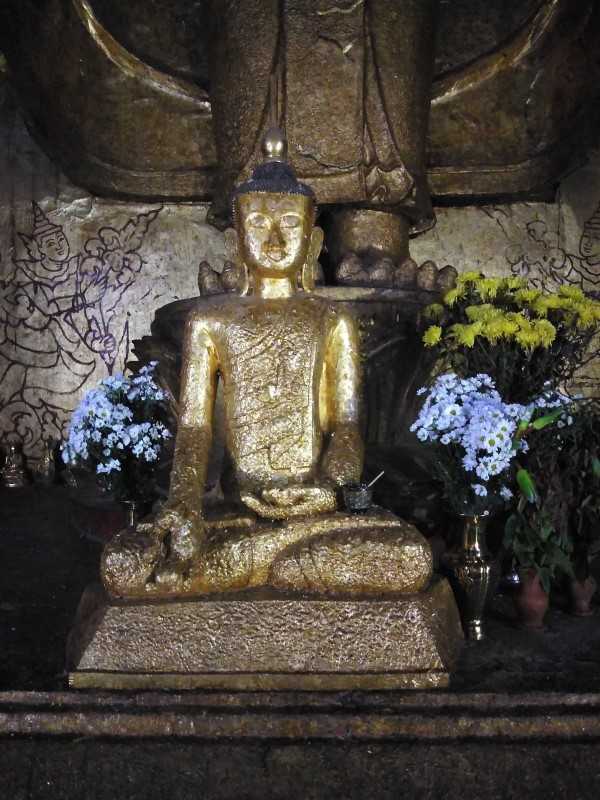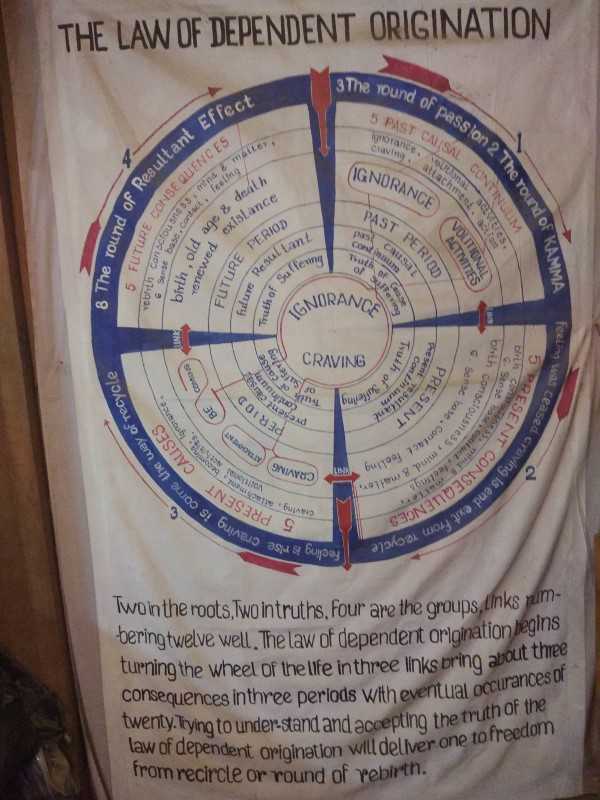King Kyanzitta constructed the Ananda Pagoda 1ooo years ago based on the vision of a cave temple in the Himalayan mountains. Indeed, King Kyanzitta’s vision of the temple was so beautiful that he ordered the execution of the architects to keep it original. Ananda pagoda became well known for the golden sikhara and especially its four golden Buddhas.
The Ananda Pagoda is a prominent feature located near the ancient city of Old Bagan, Myanmar. Additionally, the golden sikhara that rises from the center is visible from several kilometers away. However, the most venerable aspects of the Ananda Pagoda are the four golden Buddhas within.

The Four Buddhas at Ananda Pagoda
Theravada Buddhist countries such as Myanmar venerate the first four Buddhas of our kalpa – the “Fortunate Aeon”. Each of the four Buddhas is a Sammasambuddha that rediscovered Buddhism and reintroduced it in their era.
These four Buddhas are Kakusandha Buddha, Kassapa Buddha, Konagamana Buddha and Gautama Buddha. Indeed, at practically every pagoda in Myanmar, statues of these four Buddhas surround the center. Additionally, the statues each face their own direction Kassapa – South, Gautama – West, Kakusandha – North and Konagamana – East.
The statues at Ananda Pagoda are each 9.5 meters in height. However, the age and style of some of the statues differs considerably.
Kakusandha Buddha Statue
Kakusandha Buddha was finished in the 12th century at the same time as the pagoda. Additionally, the statue displays the Dharmachakra Mudra which sets the “Wheel of Dharma” in motion. The statue faces the northern direction.

Gautama Buddha Statue
Gautama Buddha is the Buddha of our time who taught the Dharma to sentient life. Also, known as Shakyamuni Buddha he was born 2500 years ago in Northern India as the son of King Suddhodanna and Queen Maya.
The Gautama Buddha statue at Ananda Pagoda displays the Abhaya “Protection” Mudra which offers protection and fearlessness in the Dharma. The original statue was badly damaged by fire, however, it was reconstructed in the 17th century featuring the Mandalay style.

Kassapa Buddha Statue
Kassapa Buddha dates back to the 12th century and displays Dharmachakra Mudra. Additionally, the Kassapa statue has a facial expression which changes depending on the vantage point. When nearby, Kassapa’s face appears to be smiling. However, when farther away, the smile seems to fade.

Konagamana Buddha Statue
Konagamana Buddha displays the Varada “Gift Giving” mudra. Furthermore, Konagamana Buddha was reconstructed in the 17th century in the Mandalay style after the original was damaged by fire. Additionally, the Buddha holds a small pill in his right hand symbolizing the Dharma is the medicine to cure all suffering.

Ancient Corridors at Ananda Pagoda
Visit the Ananda Pagoda at night to enjoy the ancient corridors devoid of tourists. The interior of the temple is well lit and at the entrance of each Buddha enclave there is a huge wooden door 20 meters in height. Indeed, it is a unique experience to walk in the same corridors as the ancient Bagan kings did long ago.

At the feet of the Buddhas, there were Buddhist symbols of impermanence such as flowers. Additionally, there were Buddha statues that had been covered with gold leaf over many, many years.

Vegetarian Restaurant Near Ananda Pagoda
In Myanmar, everyone is Buddhist so it is quite simple to find vegetarian restaurants. There was a nice place near Ananda Pagoda called “Khaing Shwe Wha Vegetarian”. The owners were very friendly and they had a diagram of the “Law of Dependent Origination” on the wall.



